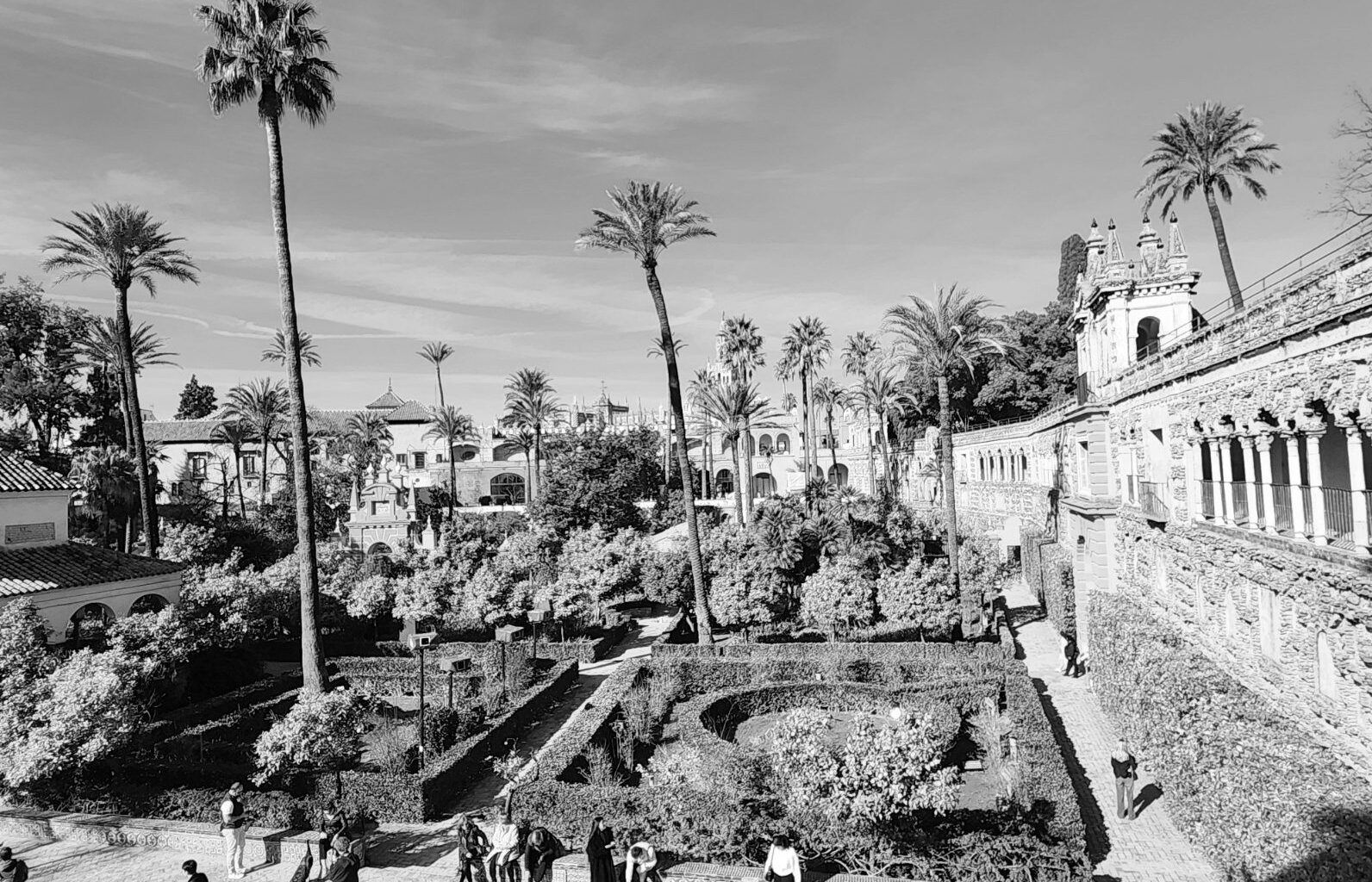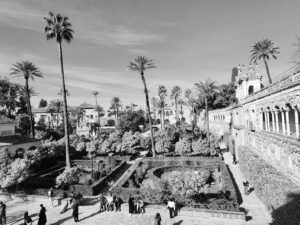
The Alcaraz of Seville was declared a UNESCO World Heritage Site in 1987. (Photos by Mark Shuman)
With a tourism cost index lower than Italy, France, or Greece, some of the mildest winters in Europe, and a lack of extreme summer crowds and heat, southern Spain is a worthy winter travel destination.
During winter break, our four-person family was in Europe to pick up a son who’d been studying in Florence, Italy. With some extra time after seeing the sights there, we looked online for accommodations in Seville, and quickly found a marble-floored Airbnb with two bedrooms and a kitchenette, just a few minutes’ walk from the city’s best sights. The dollar is almost as strong as the euro these days, so the €70 a night price was a real bargain. After learning one-way flights between the two cities cost under $150, it was “Viva, Espana!”
The two blockbuster sights in Seville are the Royal Alcazar (castle) and the Cathedral, where we were able to duck into a nighttime Spanish Mass on Three Kings eve.
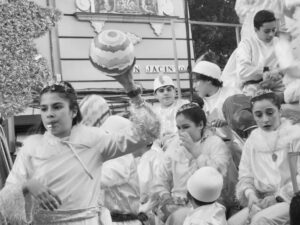
Children dressed as kings throw candy during the Three Kings parade in Triana.
“It’s important for us to stay on a straight path the way the Three Kings did,” the priest advised during the standing room only service. Three Kings Day is a major holiday in Spain and Latin America, but only one small chapel was accessible during the service. Consequently, we booked entry to the full cathedral two days later. (To see both the Royal Alcazar or the Cathedral, it’s strongly recommended to get timed-entry tickets online at least a day in advance.)
Seville’s is the biggest Gothic cathedral on earth. Built between 1434 and 1517, its bell tower, called La Giralda, looks like a Muslim minaret, and that was its original purpose. Constructed at the height of European Moorish power in the late 1100s, La Giralda houses a series of 35 ramps (designed for horses), which visitors climb up to a height of 331 feet. Up there, we were treated to the startling clangs of 24 bells, one of which weighs over 11,000 pounds. Incredible panoramic views of the city from the top include landmarks like Seville’s iconic bullring, and the Guadalquivir River, spanned by a glistening white bridge designed by the Spanish native architect, Santiago Calatrava. Other highlights of the cathedral (audio tours are €3) are paintings by Goya, Murillo, and Zurbaran, and a massive 66-foot silver altarpiece, designed to tell the complete story of the Bible via gilded and painted panels with hundreds of Biblical figures.
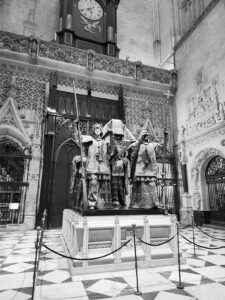
DNA evidence confirmed the genetic identity of Christopher Columbus’ body, which lies in this tomb.
The imposing tomb of Christopher Columbus draws the biggest crowds inside the church. His body was transferred to various locations in Spain and Latin America over the centuries, but DNA samples from the tomb’s skeleton were confirmed in 2006 as matches to known ancestors.
The sprawling and spectacular Royal Alcazar is Seville’s second spectacular sight. Construction was begun in the 11th century by the (Muslim) Abbadid dynasty, and the castle is still the residence of Spain’s royal family when they are in town. Most of the construction reflects the Mudejar style, a part-Gothic, part-Islamic form of architecture and décor that thrived in Spain during the 12th to 15th centuries.
The Alcazar is like the Alhambra on a slightly smaller scale. The grounds include 15 acres of lush gardens with 170 different plant species. Colorful tiles and orange trees are everywhere, and the complex is adorned with running irrigation channels and reflective pools. The most famous resident of the castle was King Pedro I, sometimes called Pedro the Cruel. He was Catholic king, but still adopted Islamic styles of architecture and clothing. Don Pedro built his own palace within the castle in 1364, and he was careful to include escape passages as a precaution against palace intrigue. One of the inscriptions in Pedro’s palace labels him “the highest, noblest, and most powerful conqueror… by God’s grace King of Castilla and Leon,” but Pedro’s powerplays within the church, and even the possible murder of his own wife, eventually got him excommunicated by Pope Urban V.
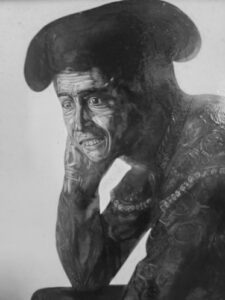
The Plaza de Toros in Seville has a museum with a large collection of paintings depicting famous matadors from several centuries.
Among other notable rulers who have walked the Alcazar’s hallways, incredibly, for more than a thousand years, was the Habsburg’s Holy Roman Emperor Carlos (or Charles) V. His empire ultimately included most of Europe. A room full of his enormous tapestries reflect his 1513 victory over the Ottoman Empire in Tunis. Other artworks in the castle include the first-ever depiction of the New World (Fernando and Isabella planned the first world circumnavigation in the castle) and also of Christopher Columbus sailing up to heaven atop a cloud.
Although its history is incredible, Seville is just as much about fun, especially at night, when the cobblestone streets come alive and stay alive — late. Hundreds of shops, tapas bars, and restaurants seem unaffected by the retail drag of online shopping or food delivery services that affect U.S. buying habits. I mentioned this to one of our cab drivers. His response: “I’ve only bought one thing online in my life,” he said. “It was a type of keychain I couldn’t find anywhere else.”
After dark, there are flamenco shows all over town, but more than anything, we enjoyed the food. Alvaro, the host of our Airbnb, recommended Casa Morales as a reasonably-priced and authentic neighborhood tapas restaurant. “Try the albondigas,” our waiter said. These were minced pork meatballs in tomato sauce. Three of us enjoyed a sherry each while sharing five different tapas. The tab was only €38.
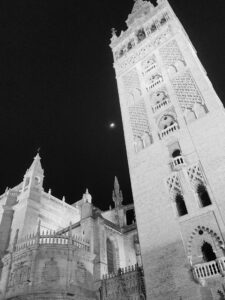
La Giralda was originally a minaret built in 1184.
With bullfighting photos and other Seville memorabilia on the walls, the old-school Cerveceria Giralda Bar is another winner, recommended by friends who had studied in Seville. Practically in the shadow of La Giralda, the restaurant is also close to a flamenco museum, so the owners play soulful, authentic flamenco music. While the indoor tables are situated among ancient Moorish baths, there’s also outdoor seating, perfect for people-watching in the high-end Santa Cruz neighborhood. We ate here twice, and the most memorable tapa among many was braised octopus served with garlic potatoes (€4.50).
After eating, we needed to pick up some gifts while in the barrio Santa Cruz. My son and I bought earrings and perfume from a white-walled and cozy boutique. Then we trekked over to Spain’s famous department store, El Corte Ingles. A throwback to the glory days of Marshall Field’s in Chicago, this department store sells everything from furniture and food to clothing and electronics. It’s always jammed. Among other items, I grabbed two vials of Spanish saffron, which always makes a great gift. Tiny and packable, saffron makes stateside paella authentic, and costs a fraction of the U.S. price.
While many people don’t approve of bullfighting, the Plaza de Toros de Sevilla is another iconic landmark in town. Bullfighting evolved into its contemporary form in this baroque 18th century structure. The plaza houses its own museum, and an optional audio tour explains the ins and outs of a national phenomenon that Ernest Hemingway wrote “is not a sport, it is a tragedy.” Visitors with tour tickets are allowed to walk right on the sands where scenes of “Death in the Afternoon” took place. It’s hard to imagine what it feels like to be charged by a sprinting 1,600-pound bull under gazes from the Royal Box and up to 13,000 other aficionados cheering or booing from the stands.
The Plaza de Toros has its own baroque chapel, where matadors pray before entering the ring. Near the chapel doorway sits a “Jug of Fear” that bullfighters drink from after prayers for courage and bravery. The last death of a matador in Spain occurred in 2016.
A less well-known Seville attraction is Casa Palacio de las Dueñas, a palace inhabited by nobility from the House of Alba for 500 years. Built in the Renaissance style, it has Moorish arches, fantastic gardens, and personal collections from a family that has cavorted with Spanish royalty and the rest of the one percent for centuries. The latest Duchess of Alba entertained her friend Jaqueline Kennedy here in the 1960s, and the palace has one of Jackie’s watercolors and an inscribed photo casually on display.
The current Duke of Alba, 74, is a white-haired billionaire philanthropist. During our visit, he arrived in a car, breezed quietly past my son with his butler, and whooshed up a private elevator to his personal quarters upstairs.
Unplanned moments like this make trips memorable. We also happened upon the annual Three Kings parade in Triana, Seville’s twin city, across the Guadalquivir. Thousands of people crushed the streets while marching bands played and floats full of children dressed as kings chucked candy to spectators. Earlier, on that unusually sunny and warm afternoon, we also visited the dramatic Plaza de Espana, where families basked in the sun in a Baroque, Moorish and Renaissance revival setting so dramatic, it’s been a movie set in films ranging from “Lawrence of Arabia” to “Star Wars: Episode II – Attack of the Clones.”
Our winter break was over, but there were tons of attractions left in Andalusia well worth returning for, including remote beaches, a vast and wild national park, the Alhambra, Gibraltar, and even nearby Morocco. We promised to return soon, and Yoda, from “Attack of the Clones” fame, has some advice: “Do or do not. There is no try.”
For more information, visit the Seville tab on the Tourist Office of Spain website at: https://www.spain.info/en/destination/seville.
Support local news by subscribing to the Journal & Topics in print or online.
